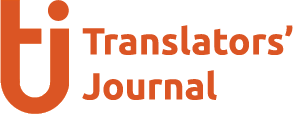
Translation speed and quality are key to measure a translator’s performance. As a translator, you’re often under pressure to deliver quickly, but faster output can sometimes come at the expense of quality. Speed and quality are competing priorities in providing translation services.
But what if you could boost your translation speed without compromising accuracy? In this article, we’ll explore practical techniques and tools—like CAT tools, time-management strategies, and productivity hacks—that can help you work faster while maintaining the high-quality standards your clients expect. Whether you’re an experienced translator or just starting out, these tips will streamline your workflow and reduce stress, allowing you to produce top-tier translations in less time!
The Importance of Balance: Speed vs. Quality
For professional translators, the ability to balance speed and quality is essential. While some believe that faster translations inevitably result in lower quality, this is not always true. In reality, achieving both can enhance your reputation, increase productivity, and help you maintain long-term client relationships. Clients value timely delivery, but they also expect accuracy and consistency. Mastering the art of working efficiently while maintaining high-quality standards will set you apart from the competition.
Time Management Strategies for Translators
Effective time management is the foundation of productivity. Here are a few strategies to help you work smarter:
- Set Realistic Deadlines: Avoid overcommitting and ensure deadlines account for research, proofreading, and potential revisions.
- Break Tasks into Manageable Sections: Tackle large projects by dividing them into smaller, more focused tasks.
- Prioritize Based on Urgency and Complexity: Start with the most challenging sections while you’re fresh, leaving simpler parts for later.
- Use the Pomodoro Technique: Work in focused sprints (e.g., 25-minute blocks) followed by short breaks to prevent burnout and maintain concentration.
Leverage CAT Tools for Faster Translation
Computer-Assisted Translation (CAT) tools are indispensable for improving translation speed while ensuring consistency. Here’s how they help:
- Translation Memory (TM): Stores previous translations, allowing you to reuse repetitive content and maintain uniformity.
- Glossary and Terminology Management: Ensures consistent use of industry-specific terms.
- Quality Assurance Features: Helps detect inconsistencies, spelling errors, and formatting issues automatically.
Popular CAT tools include:
Investing time in mastering CAT tools will significantly boost efficiency without sacrificing accuracy.
Mastering Typing Speed and Keyboard Shortcuts
Your typing speed directly affects translation turnaround time. Here’s how to enhance it:
- Practice with Typing Tools: Websites like 10FastFingers and TypingClub can help improve speed and accuracy.
- Use Keyboard Shortcuts: Learn shortcuts in your CAT tool, word processor, and operating system to reduce reliance on the mouse and speed up navigation.
- Customize Your Workflow: Configure your keyboard layout, macros, and hotkeys to streamline repetitive tasks.
Implement a Consistent Translation Workflow
Having a structured and repeatable process eliminates unnecessary delays. Consider these best practices:
- Develop a Standard Workflow: Follow a structured sequence—initial reading, translation, self-revision, and final proofreading.
- Use Templates and Style Guides: Predefined templates save time on formatting, while style guides ensure consistency across projects.
- Reduce Revisions with a Quality-First Approach: A consistent workflow minimizes the need for extensive edits later on.
Prioritize Terminology Management
Mismanaged terminology can lead to inconsistencies and slow down your work. To stay efficient:
- Create and Maintain Glossaries: Keep a repository of key terms for different clients and industries.
- Use Online and Offline Dictionaries: Tools like Linguee, Termium, and IATE can speed up term searches.
- Implement Terminology Databases in CAT Tools: Many CAT tools allow you to integrate glossaries for instant access while translating.
Avoiding Common Pitfalls that Slow Down Translation
Even skilled translators can fall into productivity traps. Be mindful of these common pitfalls:
- Distractions: Maintain a dedicated workspace and use focus-enhancing tools like website blockers if needed.
- Poor Organization: Keep reference materials, client instructions, and term bases well-organized.
- Overworking and Fatigue: Regular breaks improve concentration and reduce errors, ultimately saving time in the long run.
- Skipping Proofreading: While speed is important, failing to review your work can result in costly mistakes. Always allocate time for a final check.
Mindset and Productivity Hacks
Your mindset plays a crucial role in translation speed and efficiency. Implement these psychological techniques to stay focused and productive:
- Achieve a Flow State: Minimize distractions, set clear goals, and immerse yourself fully in the translation task.
- Use Habit Stacking: Pair translation-related tasks with existing habits (e.g., reviewing terminology while drinking your morning coffee).
- Follow Deep Work Principles: Dedicate blocks of uninterrupted time to translation, ensuring maximum concentration.
- Stay Positive and Stress-Free: Stress reduces efficiency. Practice mindfulness techniques, take breaks, and avoid multitasking to stay mentally sharp.
How to Handle Urgent Translation Requests Without Stress
Last-minute projects can be overwhelming, but with the right approach, you can manage them effectively:
- Assess the Request Realistically: Before accepting, evaluate the project scope and your available time to ensure quality work.
- Negotiate Deadlines Smartly: If possible, request slight extensions to allow for proper proofreading and final checks.
- Use CAT Tools and Pre-Translation Resources: Leverage past translations, glossaries, and machine translation (MT) for a head start.
- Prioritize Quality Over Perfection: Focus on delivering an accurate, functional translation rather than obsessing over minor stylistic details.
- Have a Contingency Plan: Keep a list of trusted colleagues or proofreaders you can collaborate with for urgent tasks.
When to Know You’ve Done Enough: Knowing When to Stop
Perfectionism can be a double-edged sword. While attention to detail is crucial, over-editing can waste time. Here’s how to find the right balance:
- Trust Your Process: Follow your workflow and review work systematically.
- Use Quality Assurance Tools: Run automatic checks for spelling, grammar, and consistency before finalizing.
- Set a Stop Point: Define a threshold for quality—once you’ve met it, submit the work instead of endlessly tweaking minor details.
FAQ: Translating Faster Without Sacrificing Quality
Q1: Will using CAT tools completely replace the need for manual translation?
A1: No, CAT tools are designed to assist translators, not replace them. They help speed up repetitive tasks and ensure consistency, but human input is still essential for quality, creativity, and nuance in translations.
Q2: How can I avoid burnout while trying to work faster?
A2: Balancing speed with self-care is crucial. Use techniques like the Pomodoro Method to take regular breaks and maintain focus. Be mindful of your workload and set realistic deadlines to avoid overworking yourself.
Q3: How can I improve my typing speed for faster translation?
A3: Practice regularly with online tools like 10FastFingers or TypingClub. As you improve, incorporate keyboard shortcuts in your workflow to reduce time spent navigating menus.
Q4: How do I handle multiple translation projects with varying deadlines?
A4: Prioritize tasks based on urgency and complexity. Break down large projects into manageable tasks, and set realistic deadlines for each. Use time management tools like to-do lists or task management software to stay organized.
Q5: Is it possible to speed up translations for specialized content (e.g., legal or medical)?
A5: Yes! Specialization often involves familiarizing yourself with common terms and phrases, creating dedicated glossaries, and using CAT tools to store and reuse these terms, saving time while ensuring accuracy.
Q6: How do I know when my translation is truly “good enough” to submit?
A6: Trust your process and establish quality thresholds. Once you’ve followed your workflow—translation, revision, and proofreading—and used QA tools to check for inconsistencies, you’re ready to submit. Remember, over-perfecting can waste valuable time.



